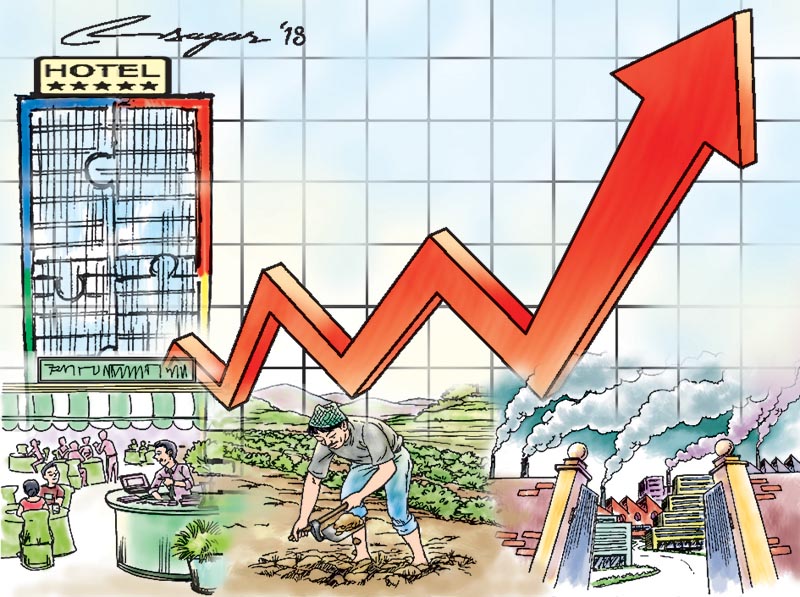Country’s gross national saving depleting
Kathmandu, May 27
The country’s gross national saving is estimated to go down by 1.5 per cent to 43.9 per cent of the gross domestic product in this fiscal.
The ‘Economic Survey 2017-18’ presented by Finance Minister Yubaraj Khatiwada to the Parliament today shows that the availability of national saving that can be mobilised to fulfil the needs of investment is getting low.
Key macroeconomic indicators
Indicators
2015-16
2016-17
2017-18
GDP growth
0.20%
7.39%
5.89%
GDP
Rs 2253.16bn
Rs 2642.59bn
Rs 3007.24bn
Per capita income
Rs 79,528
Rs 92,031
Rs103,335
Gross national saving
Rs 903.84bn
Rs 1198.54bn
Rs 1321.36bn
Gross national saving
40.11 % of GDP
45.4 % of GDP
43.9 % of GDP
Gross capital formation
Rs 763.41bn
Rs 1208.67bn
Rs 1556.43bn
Gross fixed capital formation
28.73% of GDP
31.81% of GDP
34.11% of GDP
Workers’ remittance
29.52% of GDP
26.32% of GDP
24.25% of GDP
Source: Economic Survey
Gross national saving compared to GDP was at 45.4 per cent of the GDP in the previous fiscal. “Since fiscal 2010-11 to 2015-16 the ratio of gross national saving to GDP was higher than the gross investment, however, the net investment is higher than the gross national saving from the last fiscal,” states the Economic Survey. The gap in ratio between gross national saving to GDP and gross investment to GDP is expected to widen by 0.4 per cent (negative) of the previous fiscal to 7.8 (negative) per cent this fiscal.
“This means the government has to attract foreign investment as the national saving is insufficient to fulfil investment needs,” said Suman Raj Aryal, director general of the Central Bureau of Statistics.
Due to low national saving the country’s current account deficit is also widening. The country’s current account deficit widened to Rs 153.96 billion in the first eight months of this fiscal and it is expected to widen further till the end of this fiscal, as trade deficit is soaring, remittance growth is stagnant and inflow of foreign direct investment is low.
Though the gross national saving is insufficient to cover investment needs since the last fiscal, the gross domestic saving situation is expected to reach a record high in a decade this fiscal to 15 per cent of the GDP. Nepalis’ saving habit has improved, but Nepalis still consume 85 per cent of their GDP. Along with expansion in the economy at a rapid pace since the last fiscal, the gross domestic saving situation has also improved, according to economists.
The country had witnessed 7.4 per cent growth in the previous fiscal and the economy is expected to grow by 5.9 per cent this fiscal.






